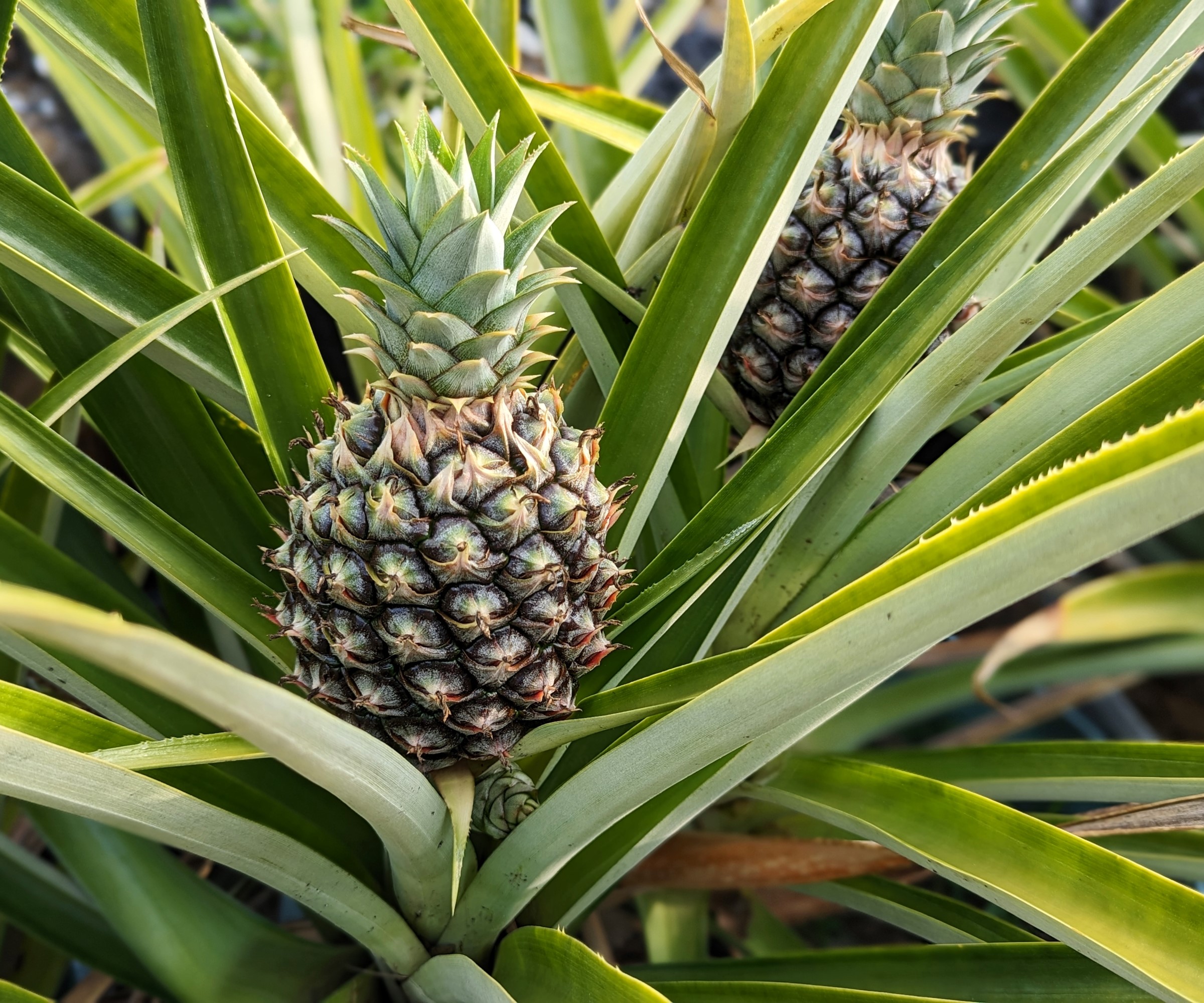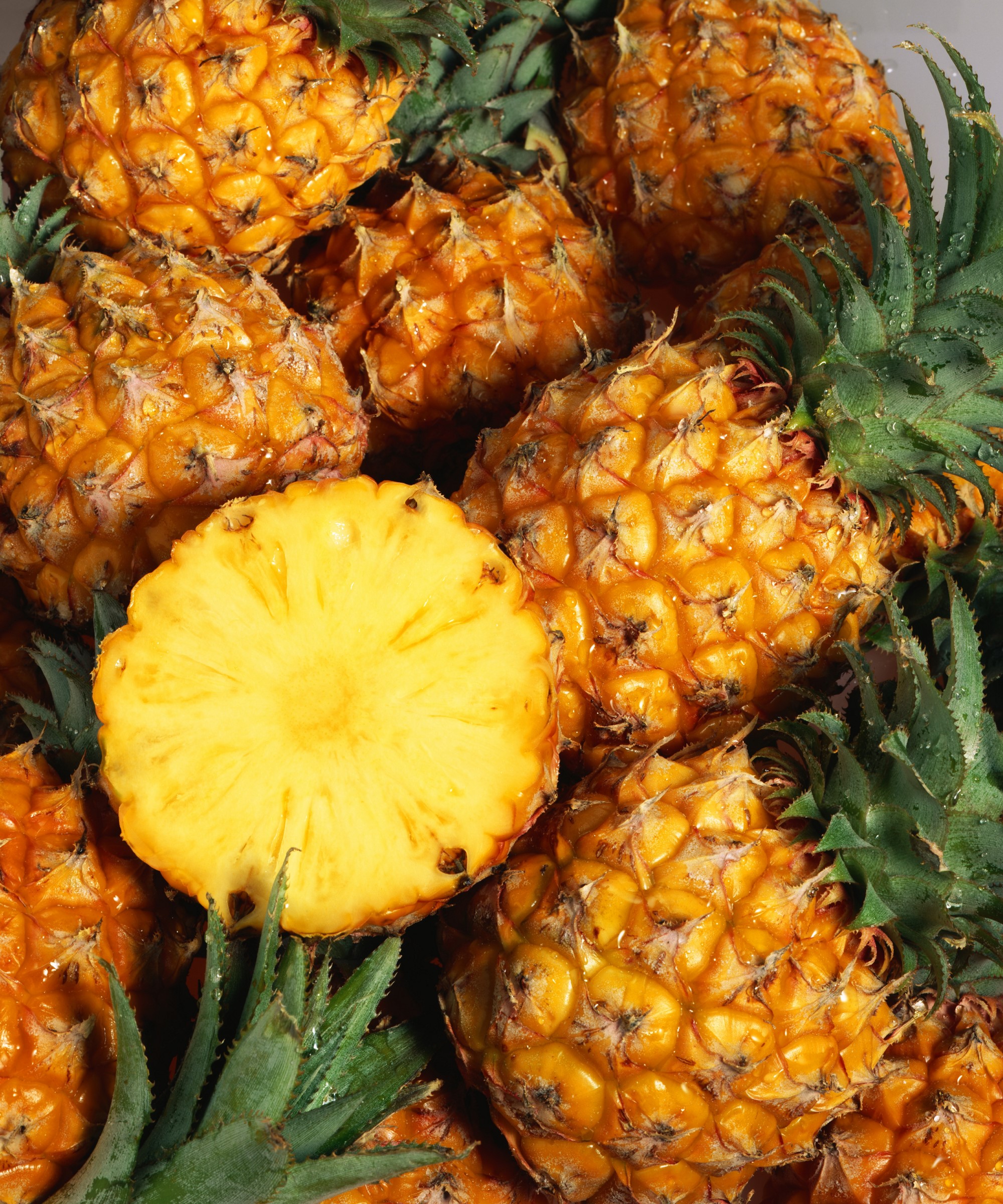When and how to pick a pineapple – 3 signs that show the ‘test of patience’ may be over
It can take up to three years to finally get a ripe pineapple to harvest from the plant


Growing pineapples requires a lot of patience and it can take years to go from planting to getting a fruit to harvest. They can be simple to grow and be an enjoyable DIY growing project, as fruits can be grown from the tops of a store-bought pineapple.
When the time comes to pick a ripe pineapple, the signs that the fruit is at peak ripeness and ready for harvest are the color, scent, and feel. Once all the signs point to ripe, then it is straightforward to cut a pineapple from the stalk that attaches it to the plant.
If you are looking to learn how to grow a pineapple, then do not be put off by the fact it may be a long process. It is important to consider that you do also benefit from having a highly decorative tropical indoor plant to enjoy during a pineapple plant’s life.

A pineapple grows on a stem rising out the middle of the plant
How long does a pineapple take to grow?
It does take years to go from planting to harvesting, and it may seem for long periods of time that nothing is happening with the plant. Pineapples can be grown outdoors or indoors, depending on your US hardiness zone, and they may need to be brought indoors for winter, or overwintered in a backyard greenhouse or heated conservatory. A pineapple does make a low-maintenance houseplant and its desire for light and humidity makes it one of the best kitchen plants.
They like a warm environment to grow in, wanting somewhere sunny and with a temperature of around 80ºF. The plant does not enjoy the temperature dropping lower than 50ºF. So it requires patience and needs a warm and light environment, potentially needing artificial lighting to supplement natural light during the winter months. This is an example of a full-spectrum growing light, available at Amazon, that can be used for indoor plants.
Pineapples tend to be grown from tops that are removed and rooted, however this itself can feel like a long process. Nicole Shah, gardener and co-founder of Garden Girls, says: ‘Growing a pineapple is a test of patience. The beginning of taking a pineapple top and getting it to root can take several weeks. After it takes root, the plant can take one to three years to produce a pineapple.’
Once you do get a pineapple, the section will die. However, during the growing process new sections will develop. These can be left to regrow, or separated and potted on, and any further pineapples may take less time to grow. Though it will still not be speedy, it will still be one-to-two years rather than closer to three. The crowns of any pineapples you harvest can also be planted to start the whole process again.
Design expertise in your inbox – from inspiring decorating ideas and beautiful celebrity homes to practical gardening advice and shopping round-ups.

Nicole Shah is a gardener and co-founder of Garden Girls, a gardening design company based in Houston, TX. The company has installed hundreds of gardens, planted according to Houston’s unique climate and seasons.

It can take over a year and a half for a fruit to start to form
How do you know a pineapple is ripe?
If it takes all that time and patience to potentially grow any fruit, then you want to ensure you pick that elusive pineapple when it is at its peak ripeness. So, the question is, how to tell if a pineapple is ripe.
Fern Berg is a gardening expert and has over 50 pineapple plants growing across her garden at the time of writing. She claims that all that patience is well worth it, as ‘you will be well rewarded for your efforts with the sweet juicy fruit and the satisfaction of knowing you grew it yourself’.
When it comes to how to tell if a pineapple is ripe, Fern says that, while the pineapple shape you are accustomed to will develop over time, it is the color and scent that distinguish a ripe pineapple from an unripe one. While it is growing the fruit will be green and have no scent, but this changes once it ripens.
‘As the fruit begins to ripen and get ready for harvest, it will start to turn the golden color you will be more familiar with,’ says Fern. ‘As it gets closer to harvest time, you may also begin to notice a sweet aroma, and your pineapple may also flop off to the side, no longer sitting upright in the center of the leaves.
‘Another sign your pineapple is ready to harvest is a slight softness when you press the fruit.’
As well as taking a potential three years to get a fruit, each plant will also only produce one pineapple at a time. So keep a close eye on that golden yellow color developing and the aroma that develops when a pineapple develops its sugars to make sure you pick that pineapple at the right time. Avoid the fruit getting too soft, as that is a telltale sign of an overripe pineapple.

Fern Berg is the founder of Tree Vitalize and has planted and currently cares for over 100 different native and exotic fruit, nut, and ornamental trees. She also cultivates an extensive vegetable garden, and several flower gardens and cares for an ever-growing happy family of indoor plants.

A developed fruit can take six months to ripen on the plant
How to pick a pineapple off the plant
The actual process of harvesting a ripe pineapple from the plant is very simple, but does need to be done carefully to avoid damaging the fruit. Use a pair of clean and sharp pruning shears or a sharp knife to cut through the stalk where it meets the base of the pineapple.
Take your tool and make a clean cut to separate the fruit from the plant. Fern Berg advises that gardening gloves might also be handy when you go picking as ‘both the leaves and fruit can be prickly’.
Fiskars Harvesting Knife | Available at Amazon
This harvesting knife has a stainless steel blade with a flat tip for quick push cuts and a serrated section for saw cuts. It is ideal for harvesting thick stalks and stems.
FAQs
What happens if you pick a pineapple too early?
If you do harvest your pineapple a tad prematurely then it can be left on the kitchen counter for a few days. A pineapple will not continue to ripen once it has been picked and won't get sweeter in taste, however it will get softer in texture over the course of a day or two at room temperature. An underripe pineapple can be cooked or grilled to help bring out the sugars, however very unripe pineapples can be potentially toxic to eat.
Pineapples do make a great indoor plant thanks to their striking foliage that makes them stand out in any space. In fact, most people will grow them as houseplants as these tropical plants do only tend to be hardy in USDA zone 10 or warmer.

Drew has worked as a writer since 2008 and was also a professional gardener for many years. As a trained horticulturist, he worked in prestigious historic gardens, including Hanbury Hall and the world-famous Hidcote Manor Garden. He also spent time as a specialist kitchen gardener at Soho Farmhouse and Netherby Hall, where he grew vegetables, fruit, herbs, and cut flowers for restaurants. Drew has written for numerous print and online publications and is an allotment holder and garden blogger. He is shortlisted for the Digital Gardening Writer of the Year at the 2025 Garden Media Guild Awards.
